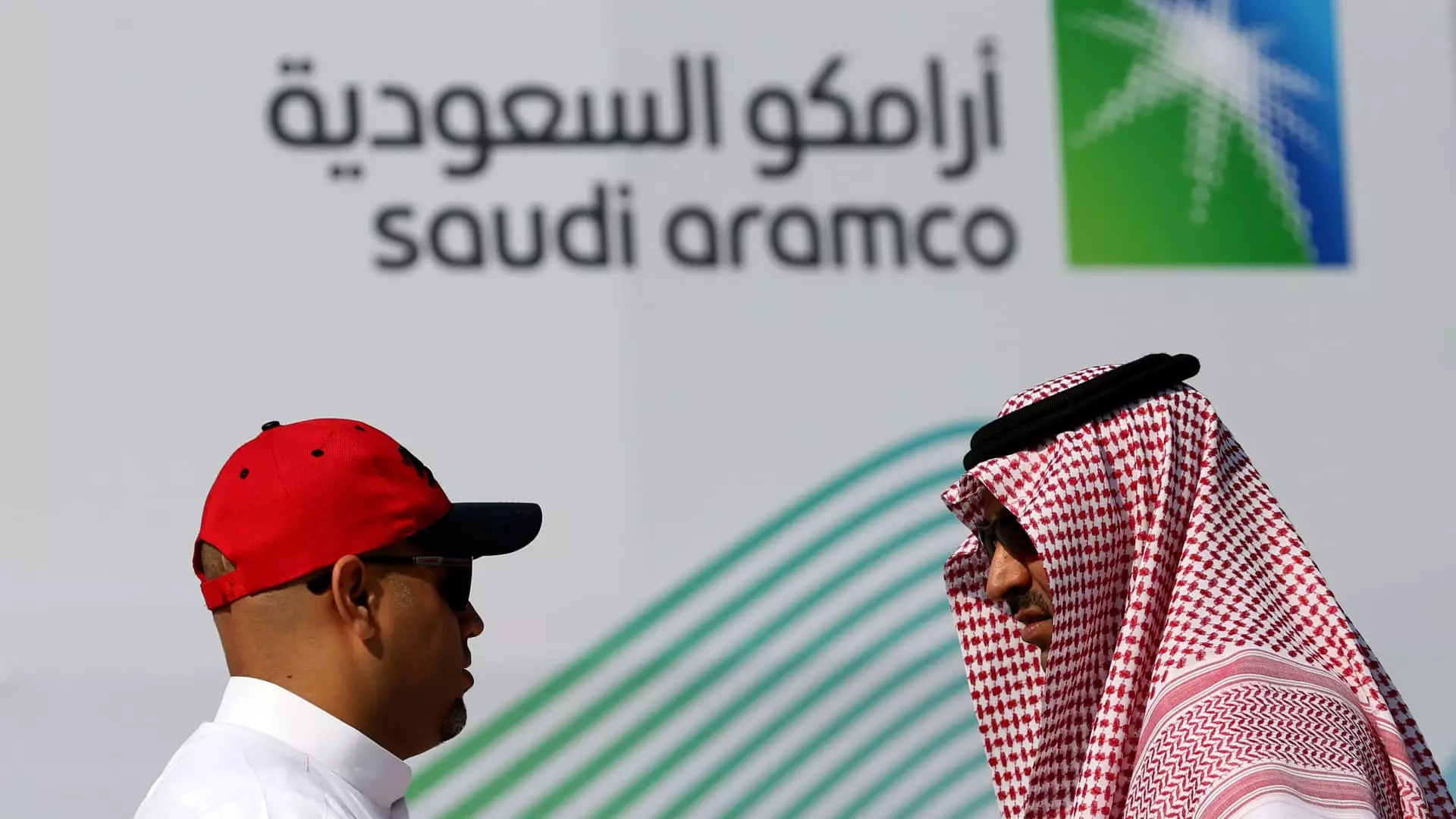Saudi Aramco’s recent announcement regarding its first-quarter profits serves as a stark reminder of the volatility of the oil market and raises glaring questions about the long-term sustainability of its financial health. With a reported net income of $26 billion, the company saw a 5% decline year-on-year from $27.3 billion, contrasting sharply with expectations that had analysts predicting a slightly lower figure of $25.3 billion. While the numbers may appear acceptable to some, they hint at a troubling trend, signaling not just a temporary setback, but a potential shift in the very foundation of Saudi Arabia’s economic landscape.
As global oil prices continue to struggle and production steadily declines, Aramco’s balance sheet reflects increasing pressures exacerbated by international trade uncertainties and decreasing demand. The stark reality is that, even with free cash flow reported at $19.2 billion—down from $22.8 billion last year—Saudi Aramco is increasingly finding itself in a precarious position. These cash flows, combined with operating income that also fell to $31.7 billion from $33.6 billion in the previous year, indicate more than just minor fluctuations; they expose the deep-seated vulnerabilities ingrained in the kingdom’s oil-dependent economy.
Dividends Dwindling: The Government’s Dilemma
Perhaps what is most alarming about this earnings report is the drastic reduction in performance-linked dividends. Initially set at a staggering $10.2 billion for the fourth quarter of 2024, the payout has been slashed to a mere $200 million, an astounding decrease that puts the Saudi government in a tight spot. The reported base dividend has increased only slightly by 4.2%, reaching $21.1 billion; however, the total dividend has plummeted from $31 billion a year ago to $21.36 billion, a clear indication of Aramco’s struggle to sustain previous levels of profitability amid drastically changing market conditions.
This reduction puts significant strain on the Saudi government, which relies heavily on oil revenues to balance its budget. Given the kingdom’s ambitious megaprojects and infrastructure investments, any decrease in revenue exacerbates an already challenging fiscal situation. The International Monetary Fund (IMF) estimates that Saudi Arabia requires oil prices to exceed $90 per barrel to achieve fiscal balance, a near impossibility in the current economic climate, further entrenching the kingdom in its long-standing struggle with budget deficits.
Global Market Dynamics and OPEC’s Role
The recent shifts in production strategies among OPEC+ countries only complicate matters further. Despite the ongoing pressure due to decreasing demand, the decision to ramp up oil production comes as a surprising twist that could upend the fragile equilibrium trying to stabilize oil prices. Following months of coordinated cuts aimed at restoring market balance, the announcement to accelerate production raises profound questions about the oil cartel’s strategy and the potential ramifications for global energy markets.
As forecasts from major banking institutions like Morgan Stanley and Goldman Sachs predict considerable supply surpluses in the latter half of 2025, the implications for Saudi Aramco become even more daunting. With price predictions dropping as low as $60 per barrel, the threat of a major budget deficit looms heavily over the kingdom. In an already tumultuous global economic landscape, can Saudi Arabia maintain its position as a leader in the oil-exporting community while facing such dire economic forecasts?
Reliance on Oil: A Long-term Pitfall?
The ongoing situation serves as a reminder of one critical truth: Saudi Arabia cannot afford to remain reliant solely on oil. The systemic vulnerabilities of its economy, already exposed during this downturn, highlight the urgent need for diversification. Vision 2030, initiated by Crown Prince Mohammed bin Salman, aimed to steer the country toward a more varied economic construct by reducing dependence on oil. However, the continued dominance of oil revenue makes this ambition look increasingly fragile without immediate and decisive actions.
Saudi Aramco may still boast remarkable low-cost operations and a scale that few can match, but long-term sustainability depends on more than mere financial maneuvering. The changing dynamics of the global oil market, influenced by geopolitical tensions and climate change considerations, present an urgent call to re-evaluate economic strategies. Failing to pivot from an industry marked by volatility could ultimately lead to a collapse of not just Aramco but the entire kingdom’s economy, thrusting Saudi Arabia into an era of uncertainty and vulnerability it can ill afford.
The ongoing decline in profits and dividends should serve as a rallying cry for reform, forging pathways towards a more adaptive and resilient Saudi economy, capable of weathering both the immediate storms and the turbulent seas of the future.

